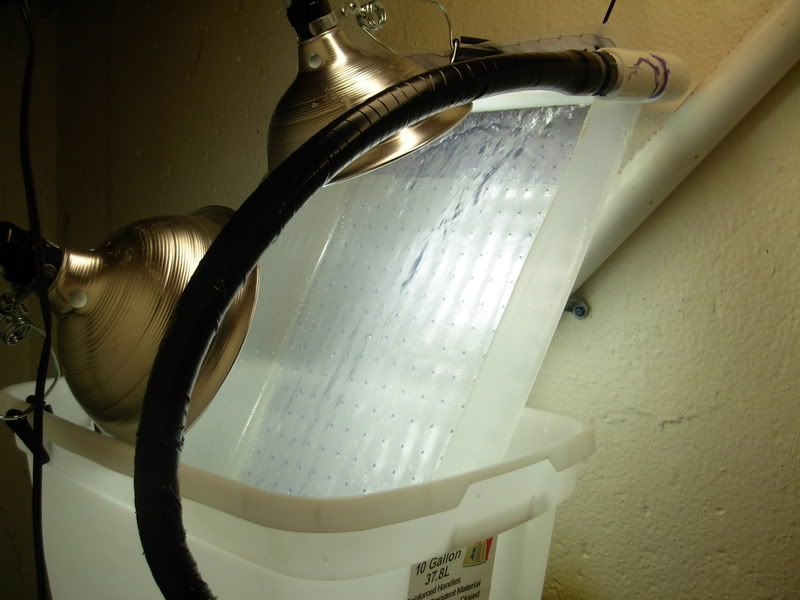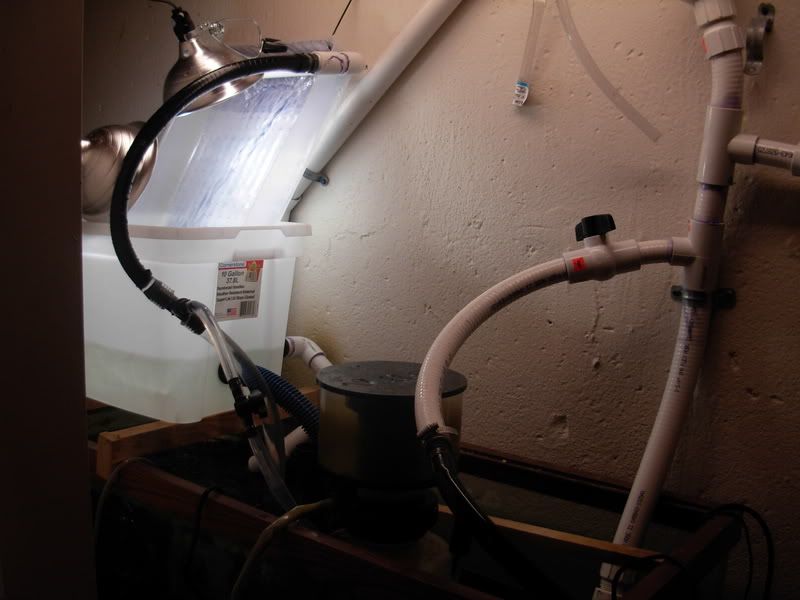sean48183
Member
Alright I'm in. Little tank info
1 and 1/2 year old 150g on main floor with 90g sump(half of this is fuge) in basement
octo 300 recirc skimmer
Lots of greedy eating and pooping machine fish
about 10 patches of hardy a$$ corals
ph 8.3
temp 81
alk 3.3 meq/l
calcium 400ppm
Here's the kicker-nitrates 80 ppm ouch
This thread has really intrigued me. I have been growing hair algae as filtration since my old 55g tank. It was something similar to what you have here but it was horizontal. A maxijet 1200 fed a 15g drilled tank that gravity fed back to main tank. 2 intense 27watt 6500k compact fluerescent lights pounding it. Originally started with chaeto but hair algae soon consumed it. Was ticked off at first but realized that the hair algae in main tank was disappearing and nitrates and phosphates were non existent. So i just started growing the stuff like crazy and pulling it out every couple weeks.
On my 150g tank things have not gone so well. Fuge for growing hair algae was deep so I built a shelf with pvc and eggcrate. Well cleaning this thing has been a pain and it hasn't really helped my nitrates at all. So I saw this thread about building a vertical one and I thought this is it. Space where my sump is limited horizontally but not vertically. So I built this scrubber this week and have been trial and erroring it now for a week to get it jut right. Here it is


Used plastic carpet runner attached to a small pvc rod for easy removal and cleaning. Runner is about 30" tall and and 12" wide with 2 cf 23 watt 6500k bulbs. Water is pumped up by quiet one 3000 is running at around 400g/hr through this thing. Tell me what you think and any ideas for improvement. Will post results of nitrates every week or so.
1 and 1/2 year old 150g on main floor with 90g sump(half of this is fuge) in basement
octo 300 recirc skimmer
Lots of greedy eating and pooping machine fish
about 10 patches of hardy a$$ corals
ph 8.3
temp 81
alk 3.3 meq/l
calcium 400ppm
Here's the kicker-nitrates 80 ppm ouch
This thread has really intrigued me. I have been growing hair algae as filtration since my old 55g tank. It was something similar to what you have here but it was horizontal. A maxijet 1200 fed a 15g drilled tank that gravity fed back to main tank. 2 intense 27watt 6500k compact fluerescent lights pounding it. Originally started with chaeto but hair algae soon consumed it. Was ticked off at first but realized that the hair algae in main tank was disappearing and nitrates and phosphates were non existent. So i just started growing the stuff like crazy and pulling it out every couple weeks.
On my 150g tank things have not gone so well. Fuge for growing hair algae was deep so I built a shelf with pvc and eggcrate. Well cleaning this thing has been a pain and it hasn't really helped my nitrates at all. So I saw this thread about building a vertical one and I thought this is it. Space where my sump is limited horizontally but not vertically. So I built this scrubber this week and have been trial and erroring it now for a week to get it jut right. Here it is


Used plastic carpet runner attached to a small pvc rod for easy removal and cleaning. Runner is about 30" tall and and 12" wide with 2 cf 23 watt 6500k bulbs. Water is pumped up by quiet one 3000 is running at around 400g/hr through this thing. Tell me what you think and any ideas for improvement. Will post results of nitrates every week or so.







